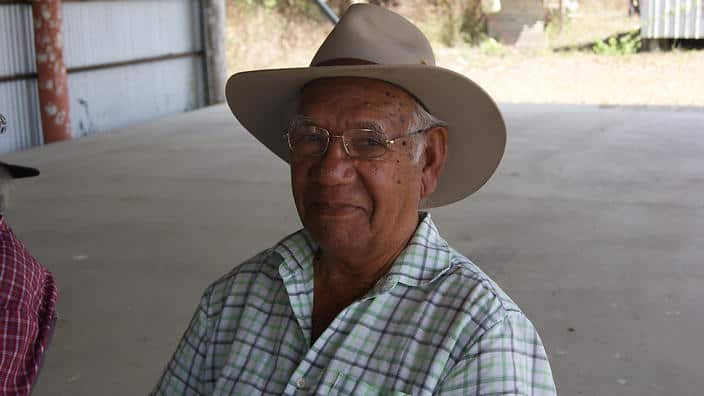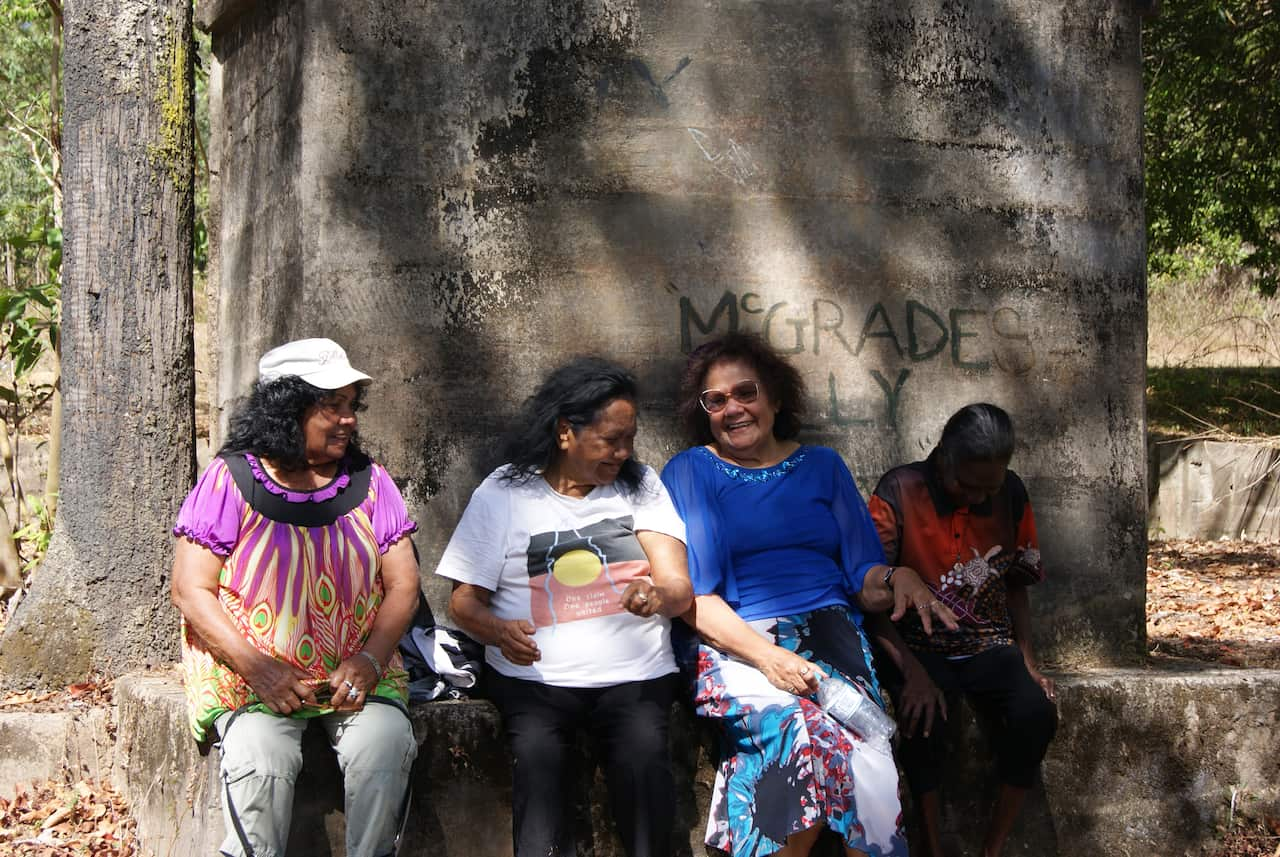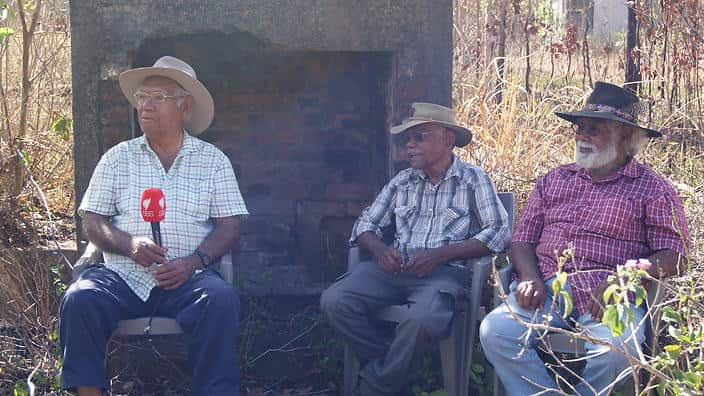Ronnie Richards was forcibly removed from his family in Georgetown in Far North Queensland at the age of five.
He and his brother were taken 400 kilometres away to the Mona Mona Mission.
“I was stolen from up there, away from my mother and my family you know?” he says. “I never, ever seen my mother again.”
Ronnie is one of more than 70 Indigenous people who received compensation earlier this year from the Queensland government for their removal and mistreatment in mission dormitories throughout the 20th Century.
The 85 year old says he has rarely spoken about some of his experiences at the mission, and some he has kept a secret his entire life, even from his wife and children.
Ronnie claims he was sexually abused by Indigenous men from the mission from the age of six to 11.
He eventually reported the abuse to the mission superintendent, but nothing was done.
“It still affects me thinking about all this,” he says. “I’ve had a lonely life.” Throughout the 20th Century, Indigenous people were forcibly removed from their land onto church-run missions all around Far North Queensland.
Throughout the 20th Century, Indigenous people were forcibly removed from their land onto church-run missions all around Far North Queensland.

Ronnie Richards sits at Mona Mona mission. (SBS)
From as young as five, children were taken from their families and forced to live in dormitories, under harsh conditions.
Opened in 1913 by the Seventh Day Adventist Church and closed in 1962, the remains of the buildings at Mona Mona mission are still standing today, about an hour’s drive from Cairns.
Djiru woman Rae Kelly remembers the harsh conditions in the girl’s dormitory, where the girls were locked inside from 6pm to 6am every night.
“No mattress, no sheets, no pillows” she says. “At winter time we slept on the floor cuddled up to try and keep ourselves warm.”
Valma Green’s family lived nearby on the mission and she remembers running away from the dormitory to find her mother to ask for food.
“When I found her she said 'What [are] you doing here this time of the night?’ I said 'Oh mum I'm hungry and I never have enough food to eat'. She gave me some food to eat and then we came back to the dormitory.”
For this misdemeanour, Valma was put into jail and had her head shaved by the missionaries.
Florence Brim says this was a common punishment at Mona Mona mission. She herself went to jail three times. Her longest stint was more than three weeks. Ronnie is one of the last three surviving men from the Mona Mona mission, along with the Riley brothers, Mervyn and Clem.
Ronnie is one of the last three surviving men from the Mona Mona mission, along with the Riley brothers, Mervyn and Clem.

Florence Brim, Valma Green, Rae Kelly and Joyce Riley sit at the girls’ dormitory. (SBS)
Unlike Ronnie, the Riley brothers were born on the mission, but at an early age they were forcibly removed to the dormitory and spent the rest of their childhood separated from their family by a fence.
“When I first went to dormitory, I cried night and day for my parents,” Mervyn says. “I wanted to be with them and I just couldn’t be with them.”
There were about 14 missions around Far North Queensland, where hundreds of children were removed from their families and lived in dormitories.
But while the missions were set up and funded jointly by various Church denominations and the Queensland government, they were not officially licensed by the state.
It’s this legal loophole which has led to a six-year battle between the former residents of Mona Mona mission and the Queensland government. A large-scale state government inquiry into the treatment of children in licensed government and non-government institutions in Queensland, known as the , found wide-scale allegations of abuse.
A large-scale state government inquiry into the treatment of children in licensed government and non-government institutions in Queensland, known as the , found wide-scale allegations of abuse.

Ronnie Richards, Mervyn Riley and Clem Riley at the boys’ dormitory. (SBS)
This led to thousands of claimants receiving compensation from the state from 2007-2010 under the Redress scheme.
However many Indigenous claimants were left out, with those from Mona Mona and other church-run missions told they did not qualify, because the missions were “unlicensed”.
Thea Buthmann, outreach co-ordinator at community organisation Ngoonbi Co-operative, spearheaded the push for Mona Mona mission be included in the compensation. She says they were surprised and hurt to be left out.
“We got a letter back from them to say that weren't eligible simply because we weren't a registered body,” she says.
“We wrote to all the government agencies we wrote to the Prime Minister all the ministers, the Indigenous minister, the state and the federal governments, we wrote to everybody.”
The Cairns-based law firm Bottoms English believed those from Mona Mona, and other missions around the area, had a case against the state government for racial discrimination for being left out of the compensation scheme.
At the beginning of this year, the firm lodged an application on behalf of more than 70 people with the Australian Human Rights Commission, arguing that Indigenous children in dormitories went through similar hardship to those in licensed Queensland institutions.
Under the compulsory mediation process, the claimants were finally offered compensation a few months ago under the same terms as earlier claimants.
Bottoms English lawyer Jerry Tucker says the state and the Elders have avoided a lengthy class action in the Federal court by agreeing on compensation.
“The compensation that they would receive if they had gone to court would be significantly higher than what they're getting now it's hard to estimate exactly what that is,” Jerry Tucker says.
The law firm has now agreed with the state to make further claims for eight other communities from around the Cape and in the Gulf. For some from Mona Mona mission though, the compensation has brought very little closure.
For some from Mona Mona mission though, the compensation has brought very little closure.

Rae Kelly is now working on her own history of the mission, told by the elders themselves. (SBS)
“It just didn't even cover it. The hurts still goes on,” Rae Kelly says.
Others believe that the Seventh Day Adventist Church should also be held accountable.
Judy Enoch is a member of Seventh Day herself and has been lobbying senior members of the Church to officially recognise what happened at Mona Mona.
She say that while the Adventist church issued a general apology a few years ago to Aboriginal people for any wrongs that had been done in the past, it’s still not enough.
“There has been no attempt made by the Church to come and hear their stories,” she says. “The elders are being let down by the Church.”
She says the majority of Mona Mona Elders are now set on pursuing legal action against the Seventh Day Adventist Church for the mistreatment they suffered at the mission.
A representative from the national Seventh Day Adventist body told SBS: “We are very concerned about any allegations of misconduct in the past and welcome the opportunity to dialogue with anyone who may have concerns that have not been addressed.”
But with another drawn out legal battle is looming, some say compensation will never be enough for the loss of their childhood.

